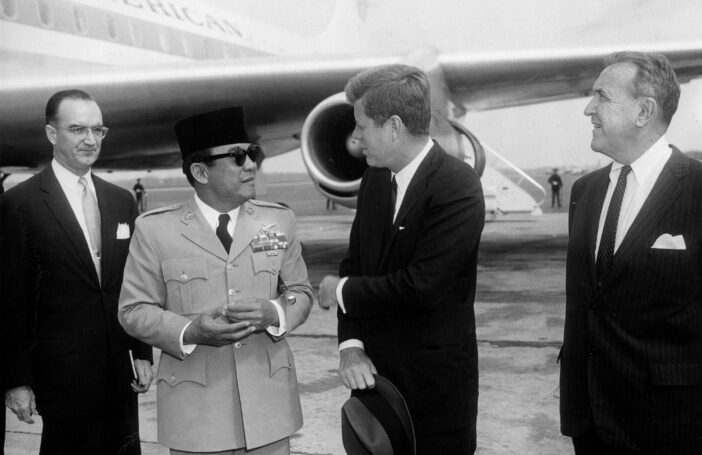The previous blog looked at some studies of the relationship between China’s aid and its influence that posit a mediating role for domestic political institutions. Early empirical research suggests that this kind of analytic lens is relevant to the Pacific. This is a region that comprises countries with largely open — albeit in some cases small and often fragile – domestic political institutions and one in which China has increased its aid effort over the last decade.
While China appears to have been successful in using aid and other economic inducements to help persuade several Pacific island countries (PICs) to shift their diplomatic recognition from Taiwan to the People’s Republic of China in recent years, its ability to extract more “expensive” policy concessions has been limited. In 2022, China failed in what was reported as a concerted and sustained attempt to secure a region-wide policing and security deal with the Pacific Islands Forum countries. The announcement of a non-public bilateral security and policing agreement between China and Solomon Islands earlier that year became the focus of a subsequent domestic political backlash against the government of former Prime Minister Manasseh Sogavare. The newly elected government of Fiji downgraded its own policing cooperation with China in the wake of the Solomon Islands agreement. These examples may reflect China’s inability to date to secure a wider “social licence” from local communities in PICs, despite the substantial aid effort it has directed at elites. Some Pacific elites have also proven adept at instrumentalising China’s aid narratives to suit their own domestic and foreign policy goals. The fact that Beijing’s aid effort in the Pacific peaked in monetary terms in the mid-2010s and has declined in recent years may reflect not only changing economic conditions within China. It may also indicate a reduced appetite on the part of Pacific elites to take on large Chinese-funded projects due to concerns about increased domestic backlash and unsustainable debt.
Even when it comes to more autocratic political settings, China has sometimes struggled to translate development and financial support into alignment with its foreign policy preferences. For example, China is one of the few providers of bilateral aid (primarily in form of food aid and energy supplies), as well as foreign direct investment and trade, to totalitarian North Korea. The contemporary relationship between Beijing and Pyongyang has been described, however, by one set of experts as one characterised by “growing investments and diminishing returns”. Despite the volume of Chinese aid provided to North Korea over the decades, these experts point specifically to Beijing’s inability to achieve one of its primary foreign goals – curbing Pyongyang’s nuclear weapons and ballistic missile programs.
In other cases, it is the weakness of potential client states that poses the biggest constraint to China’s influence. In the case of Pakistan — a country which has accepted a large amount of Chinese infrastructure finance under the framework of the China-Pakistan Economic Corridor (CPEC) — successive economic crises and political violence in regions that are part of the CPEC have “tied China irrevocably into Pakistan’s complicated, and sometimes hostile, political landscape”. As a result, “[China’s] centralising visions could not be simply imposed on a receptive (or captive) periphery but [has] required difficult negotiations with local interests”. This has, in turn, “exert[ed] a transformative pressure back on China itself” when it comes to the costs, threats and risks generated by the unintended effects of its economic statecraft. This suggests that attempts to link aid with policy change are not unidirectional and can affect donors as well as recipients. Following Myanmar’s reversion to military rule in 2021, China — one of the dictatorship’s few remaining external benefactors — has also struggled to exert influence over the fledging State Administration Council junta as lawlessness and conflict threaten key Chinese infrastructure investments and criminal gangs further embed themselves in the sensitive China-Myanmar border regions.
China’s use of various types of debt instruments as a primary modality through which it delivers its development finance has been a particular source of contention with some Belt and Road Initiative (BRI) recipients. While charges from the West of “debt trap diplomacy” have been largely discredited as overstated, the opacity of China’s BRI lending has generated backlash from recipient elites and publics in several high-profile cases, including in Sri Lanka and Malaysia. In the case of Africa, “the indebtedness generated by BRI loans coupled with their emphasis on facilitating infrastructural changes for outflow of primary commodities has raised memories of colonialism for many African observers”. In these and other cases, the use of debt instruments has generated new sources of conflict between China and potential client states. Along with the growing risks to China’s economy and state-owned banks from the moral hazard associated with unsustainable BRI loans, this has resulted in Beijing significantly reducing its global infrastructure lending and re-orienting its focus toward so-called “small and beautiful” projects and multilateral aid.
These examples suggest that, as well as domestic institutions, the type of finance provided may itself have an independent effect on the extent to which bilateral donors are able to use aid to achieve wider foreign policy goals, including as a result of unintended effects. That is, the mere coercive potential of debt, whether realised or perceived, may itself invite a backlash on the part of recipient elites and/or publics against donors, regardless of the latter’s motives.
This is relevant to Australia given its newfound position as a leading source of infrastructure lending to the Pacific — a position that could generate unintended effects in terms of Canberra’s own regional relationships, particularly given the increased level of indebtedness of several PICs and the risk of a lack of attention to project quality and fiscal sustainability relative to geopolitical objectives. This highlights the potential perils of unsophisticated narratives regarding the causes and consequences of China’s “economic statecraft” and the need to engage with the kinds of research canvassed here.
This is the second part of a two-part blog series. Read part 1.




